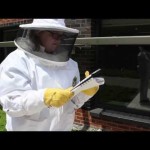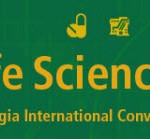
Biology undergraduate Meredith Greene investigates the use of Rhodococcus rhodochrous DAP 96253 to inhibit the growth of a pathogenic fungus that preys on honeybee larvae, with the Urban Honeybee Project at

Dr. Christopher Cornelison talks to GSTV’s Alex Osiadacz about the indoor air quality research project currently being conducted to study fungal colonization of buildings. Read the GSTV post. Watch the video on YouTube.

From ScienceFriday.com: “Since its appearance in the U.S. seven years ago, white-nose syndrome has decimated bat populations across eastern North America. Scientists say they’ve determined the culprit—a soil-dwelling fungus called Pseudogymnoascus destructans—and now they’re investigating novel ways to stop it,…

From GABio.org: “The Georgia Life Sciences Summit has become a premier bioscience conference in the Southeast welcoming nearly 600 CEOs, senior executives, scientists and public policy officials from Georgia and across the nation. This year’s theme is Innovation for Global…

From WhiteNoseSyndrome.org: “The U.S. Fish and Wildlife Service, Idaho Department of Fish and Game, Arizona Game and Fish, and Bat Conservation International are hosting the 6th annual White-Nose Syndrome Workshop September 3-6, 2013 in Boise, Idaho. The overall goal of…

From SIMhq.org/ramc: “First organized in 2010, RAMC is held biannually in fall of even years. The meeting is a forum for established industry leaders, entrepreneurs, academics and regulators to discuss new technologies and recent developments in controlling microbial activity in…




